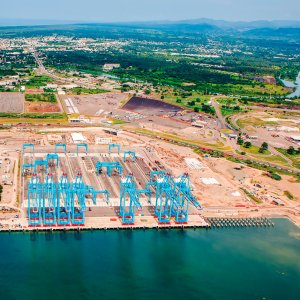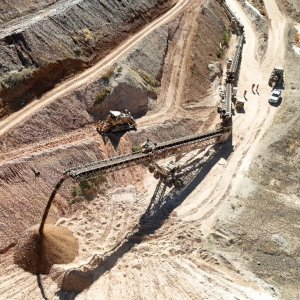Align NIP Objectives with Client Base for Success

STORY INLINE POST
Q: How has the NIP been progressing and which projects will have the most potential impact?
A: It is difficult to measure which of the projects within the NIP have the most potential because each project has a different impact on its surroundings. Some projects have a significant impact on social environments but may fail to offer reasonable rates of returns to investors due to low traffic. This is why it is important to create objectives for each project and ensure that the client base is consistent with each of these objectives. In the case of the NIP, the project portfolio was not an ideal match with the objectives established in the program. The main objective was to transform Mexico into a logistics platform, which is a strategic goal that had a project portfolio tailored exclusively to local needs. If the NIP’s objectives had been to boost southern regions and the distribution of equal opportunities at local and state levels, it would have aligned with the objectives it accomplished.
These types of inconsistencies between projects and objectives create gaps between the expected results and the public perception of its development. At the moment, the private sector feels that the projects are disconnected from the objectives they were meant to fulfil and that the current project portfolio is not boosting the productivity of the country.
Q: What factors are in play in the deceleration of competition and the completion of the NIP?
A: Having spoken with all types of banks, funds and financial institutions, we have been told the money is there and ready to be invested. The problem is that there are no projects to invest in. There is enough money to reach the percentages of investment established by the NIP but there needs to be a valuable project portfolio. These financial institutions encounter high quantities of projects that are poorly structured and planned, diminishing their desire to invest in infrastructure. The sector’s true Achilles’ heel is obtaining rights of way, which has inhibited investment across the entire country. Financial institutions invest in projects that are later shut down due to a lack of adequate planning. Problems that arise from rights of way can extend projects from three to six years, which does not factor into the investors’ risk of investment. The market has matured in the sense that investors are now turning down projects that lack structure in these areas and are growing more demanding to ensure return on investment. These types of issues are seen more in transport infrastructure rather than in energy due to the Energy Reform.
Q: What is behind the limited use of Unsolicited Proposals (USPs) in Mexico?
A: USPs have not been nearly as successful as expected. The government had envisioned that these proposals would complement their own plans and the industry would respond positively. Nevertheless, the law surrounding USPs limits the types of projects companies can submit. One of the main factors that demotivate the private sector’s participation is that USPs must align with the projects and priorities the government has defined. A company could present a solid USP for a project that is needed but if it does not complement the government’s plans it will fall through. The second factor involves incentives. The government is offering a 2-5 percent advantage in a tender as well as a return of the amount invested in the studies. These incentives are not attractive enough for companies making USPs.
Australia uses USPs as a way to complement the government’s plans, meaning the ideas are innovative and full of potential. Other countries provide incentives such as giving companies a second chance to win a bid by allowing them to restructure their proposals to match the winning proposal. These types of incentives have incremented the total number of USPs submitted and have allowed this plan to flourish and bridge the country’s infrastructure gap. PwC is making recommendations to the government as to the factors that are inhibiting companies from submitting USPs.
Q: How has the price of debt impacted infrastructure development in Mexico?
A: The price of debt in Mexico is far more expensive in comparison to the US and Canada and can be seen when compared to countries in which projects are carefully planned, are of higher quality and have undergone different maturity phases for a tendering process. Banks are not willing to offer financing when there are risks pertaining to rights of way and the environment but will charge extra for any other risks that may arise from the immaturity of a project or lack of preparation. This drastically increases the price of debt in Mexico and impacts the viability of infrastructure projects. Risks associated with planning stages elevate percentage points making projects unfeasible for investors. This often stunts development or leaves the financial responsibility to only a few that may have to sacrifice revenues or even have to restructure finances in the future.
Q: Why are companies participating less in tenders and what types of projects does the industry prefer to partake in?
A: Companies are beginning to avoid tenders and in the latest only two or three companies placed bids. Companies also are sacrificing revenue, assuming risks they are unable to compensate with the expected revenue, to enter future renegotiations. The current project portfolio is limited and there are no exceptional road projects, the last one being the Vallarta highway USP. Only two companies participated in the tender for Indios Verdes and the La Galarza project had various participants but differed in that it was tendered through the availability payment PPP plan. It has been several years since the government launched an availability payment PPP for road development. These types of projects many not have the highest yields but they are the most secure since the payment comes from the federal government over a period of 15-20 years. At the moment, the private sector is suffering due to a lack of options.
Q: Which sectors will see the most projects in the coming years?
A: In the next few years, Mexico’s ports will become more active and this is where the most opportunities for PPPs will arise. In terms of road infrastructure, there must be innovation in the current risk-sharing plans and structures, especially since there are few projects that have been completed. These projects are mostly small bypasses and there are no new large road projects on the list, forcing the sector to turn to maintenance and repair. Interurban transport systems will require a new long-term policy, where the necessity is justified and established as a long-term project, not just for the current administration. If the next administration takes the idea and forms the capacity to continue these types of projects, it will have a great impact on the development of cities in the next few years. Projects must have continuity throughout administrations and the pace must be maintained. In terms of passenger trains, it is unclear if this type of infrastructure is needed in Mexico or if the next administration will want to assume responsibility for this project and define the same priorities.






















